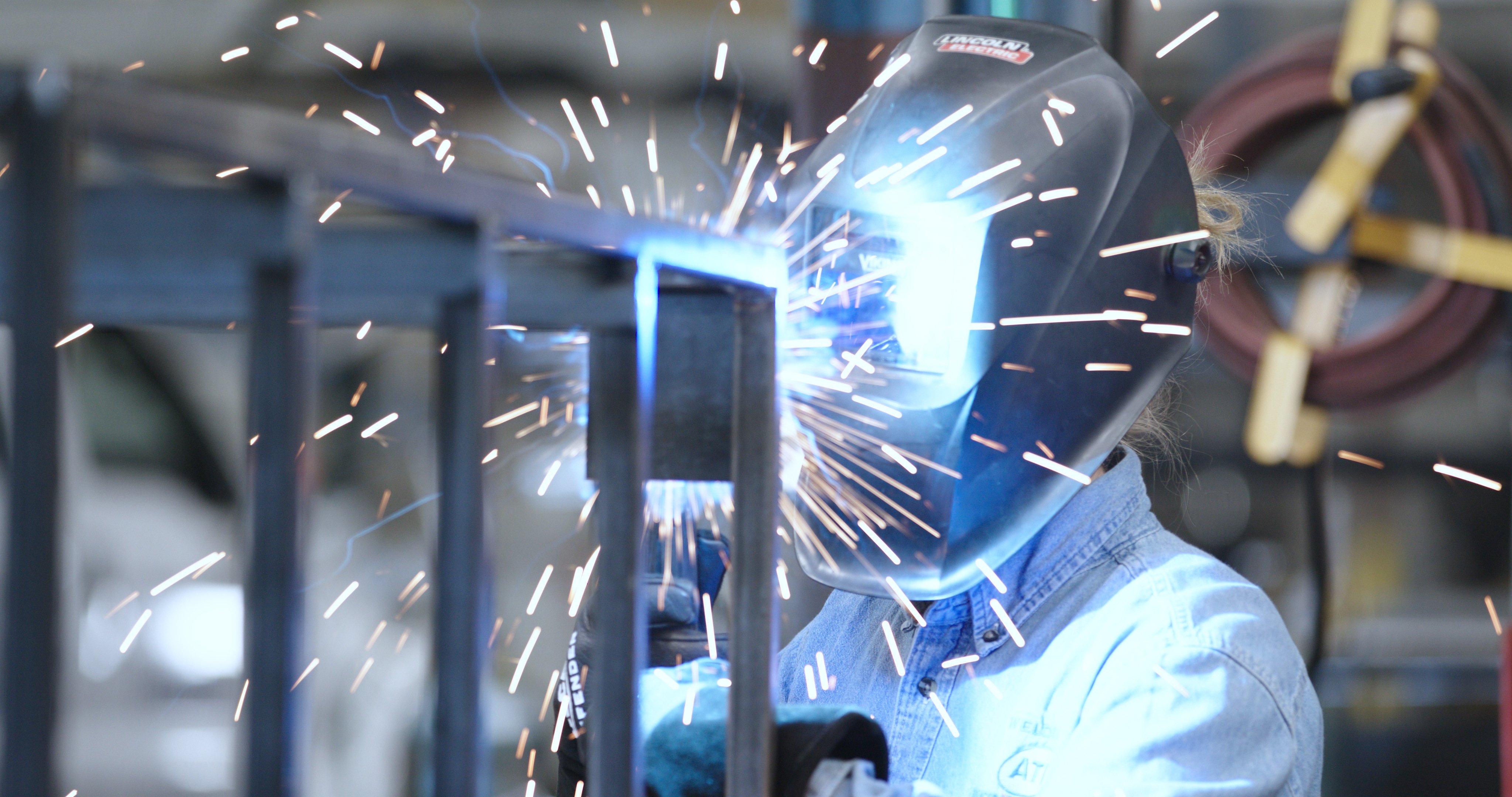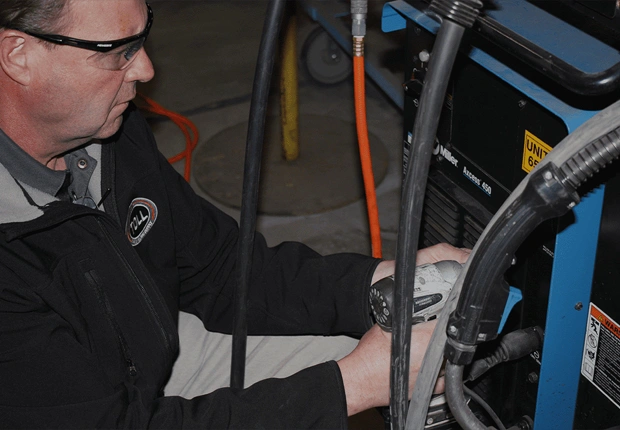Effective weld inspection practices shared by Montana Mobile Welding and Repair
Wiki Article
Typical Welding Repair Service Issues and How to Address Them Successfully
Welding repair services often experience a variety of issues that can threaten the integrity of the last item. Common issues consist of insufficient penetration, porosity, and misalignment, to name a few. Each defect presents one-of-a-kind difficulties that call for certain techniques for resolution. Recognizing these problems is crucial for welders aiming to boost their abilities and outcomes. This discussion will certainly discover these usual welding fixing issues and efficient methods to resolve them.Poor Infiltration
Poor penetration takes place when the weld metal falls short to totally fuse with the base material, resulting in weak joints and possible structural failings. This problem usually originates from insufficient warmth input, incorrect electrode angle, or inappropriate welding speed. Welders may experience poor infiltration due to a mistake of the essential parameters for a certain product density or type. Furthermore, contamination on the base material's surface area can impede reliable bonding, exacerbating the issue. To address insufficient penetration, welders ought to assure proper settings on their tools and preserve a tidy job surface area. Routine inspection of welds is recommended to recognize any kind of deficiencies early, permitting timely adjustments and the prevention of endangered architectural honesty in bonded assemblies.Porosity
Porosity is a common flaw in bonded joints that shows up as tiny gas bubbles caught within the weld metal. This problem can endanger the integrity of the weld, bring about decreased strength and possible failure under anxiety. Montana Mobile Welding and Repair. Porosity generally develops from contamination, moisture, or inappropriate welding techniques, which enable gases to get away right into the liquified weld pool. To address porosity, welders should assure proper surface area preparation, preserve a clean workplace, and make use of ideal welding specifications. Additionally, picking the best filler material and securing gas can mitigate gas entrapment. Routine evaluation and screening of welds can help recognize porosity early, guaranteeing prompt rehabilitative actions are taken, therefore maintaining the top quality and dependability of the welded structureMisalignment
Misalignment in welding can emerge from various elements, consisting of improper configuration and thermal expansion. Understanding the source is important for efficient resolution. Numerous modification techniques are offered to realign components and ensure architectural honesty.Reasons of Imbalance
Welding imbalance frequently comes from a range of underlying issues that can compromise architectural stability. One key reason is improper fit-up of components prior to welding, which can result in spaces and unequal surfaces. Variations in thermal development throughout the welding process can additionally lead to distortion, especially if the products being joined have various coefficients of development. In addition, poor securing and fixturing might fall short to hold elements securely in position, bring about motion throughout welding. Poorly kept tools, including welding devices and devices, might introduce inconsistencies in the weld grain, further adding to imbalance. Driver error, stemming from inadequate training or experience, can likewise play a substantial duty in creating misaligned welds.
Improvement Techniques Offered
Addressing imbalance successfully needs a mix of rehabilitative strategies tailored to the certain problems at hand. One common technique is the usage of jigs or fixtures to hold parts in the appropriate setting during welding, ensuring constant positioning. Furthermore, preheating the materials can help in reducing distortion and improve fit-up. For substantial imbalance, mechanical realignment methods, such as making use of hydraulic jacks or clamps, can be utilized to fix the position before welding. Post-weld warm therapy might also be required to ease stresses created by misalignment. Ultimately, mindful assessment and change throughout the setup stage can stop misalignment problems from becoming substantial problems, advertising a smoother welding procedure and boosting general structural stability.Distortion
Distortion is a typical difficulty in welding that can develop from numerous factors, including irregular heating and air conditioning. Understanding the sources of distortion is important for executing effective avoidance techniques. Resolving this concern not just improves structural honesty however additionally boosts the overall top quality of the weld.Sources of Distortion
When subjected to the extreme warmth of welding, products frequently go through adjustments that can result in distortion. This sensation mainly arises from thermal growth and contraction during the welding procedure. As the weld area warms up, the product broadens; upon cooling, it contracts, which can develop interior stresses. On top of that, irregular home heating throughout a work surface can exacerbate these anxieties, resulting in bending or bending. The sort of product also plays a significant function; metals with varying thermal conductivity and coefficients of expansion might react in a different way, bring about uncertain distortions. Additionally, inadequate joint layout and inadequate fixturing can add to misalignment throughout welding, enhancing the likelihood of distortion. Understanding these reasons is vital for reliable welding repair service and prevention strategies.Avoidance Techniques
Effective avoidance techniques for distortion during welding concentrate on controlling heat input and making certain appropriate joint design. Keeping a constant heat input assists to minimize thermal growth and tightening, which can bring about distortion. Utilizing techniques such as pre-heating the work surface can additionally lower the temperature level slope, promoting uniform home heating. Additionally, selecting appropriate joint styles, such as T-joints or lap joints, can improve stability and minimize tension focus. Implementing proper fixturing to protect the work surfaces in area even more aids in keeping alignment during the welding procedure. Staggered welding sequences can distribute warmth a lot more equally, protecting against local distortion. By applying these techniques, welders can greatly lower the possibility of distortion and improve the total top quality of their welds.Splitting
Fracturing is an usual issue come across in welding repairs, typically arising from different variables such as inappropriate air conditioning rates, product selection, or poor joint preparation. The occurrence of splits can considerably compromise the integrity of the weld, resulting in possible failings throughout procedure. To address this problem, welders need to initially analyze the source, making sure that products are compatible and suitably picked for the certain application. Additionally, controlling the air conditioning price during the welding process is vital; rapid cooling can induce stress and anxiety and cause breaking. Proper joint layout and prep work additionally add to lessening the danger. Carrying out these methods can enhance weld quality and toughness, ultimately decreasing the probability of cracking in finished weldments.
Incomplete Fusion
A significant problem in welding fixings is insufficient combination, which happens when the weld metal does not appropriately bond with the base material or previous weld passes - Montana Mobile Welding and Repair Welding. This problem can result in weaknesses in the joint, possibly endangering the integrity of the bonded framework. Variables contributing to incomplete blend include not enough warmth input, inappropriate welding method, and contamination of the surfaces being signed up with. To resolve this problem successfully, welders must guarantee proper pre-weld cleaning and surface area preparation, as well as adjust their welding criteria to achieve sufficient infiltration and blend. Regular assessment during the welding process can additionally help identify incomplete fusion early, permitting timely restorative measures to boost the overall quality of the weldOverheating
While welding repairs can enhance structural integrity, overheating presents a considerable challenge that can result in product destruction. Excessive warm throughout welding can modify the mechanical residential or commercial properties of steels, causing minimized stamina, boosted brittleness, and warping. This phenomenon is specifically crucial in high-stress applications where structural reliability is paramount. Identifying getting too hot can entail aesthetic evaluations for discoloration or distortion, as well as monitoring temperature level throughout the welding procedure. To reduce the threats linked with getting too hot, welders should utilize appropriate methods, such as controlling warm input, readjusting traveling speed, and making use of suitable filler products. Additionally, applying pre- and post-weld heat therapies can assist restore product buildings and boost the total top quality of the repair work, making sure lasting efficiency and safety and security.Frequently Asked Concerns
What Are the Typical Indications of a Welding Flaw?

How Can I Evaluate My Welds for High quality?
To check welds for quality, one can use aesthetic evaluations, ultrasonic testing, and radiographic approaches. Each method ensures structural integrity, identifies defects, and validates adherence to specified criteria, ultimately improving the reliability of the welded joints.What Safety Safety Measures Should I Take While Welding?
When website welding, one ought to focus on security by putting on suitable personal safety tools, making sure proper air flow, protecting combustible products away, preserving a tidy work area, and recognizing surroundings to prevent injuries and accidents.Can I Repair a Weld Without Redesigning the Entire Joint?
Fixing a weld without redoing the entire joint is feasible, relying on the damages (Welding). Strategies such as grinding, adding filler material, or utilizing a welding procedure can properly address particular flaws while preserving the bordering structureWhat Devices Are Necessary for Reliable Welding Repairs?
Vital tools for reliable welding repair services consist of a welding maker, cable brush, grinder, protective gear, clamps, and filler materials. Each device plays an important function in ensuring quality and security during the fixing process. Porosity commonly occurs from contamination, moisture, or inappropriate welding strategies, which permit gases to run away right into the liquified weld pool. Badly kept equipment, consisting of welding machines and tools, may present incongruities in the weld bead, additional adding to misalignment. When subjected to the extreme warmth of welding, products often undergo changes that can lead to distortion. Cracking is an usual concern come across in welding repair work, usually resulting from various elements such as improper cooling rates, product selection, or poor joint prep work. A significant problem in welding repair services is insufficient combination, which happens when the weld metal does not effectively bond with the base material or previous weld passes.Report this wiki page